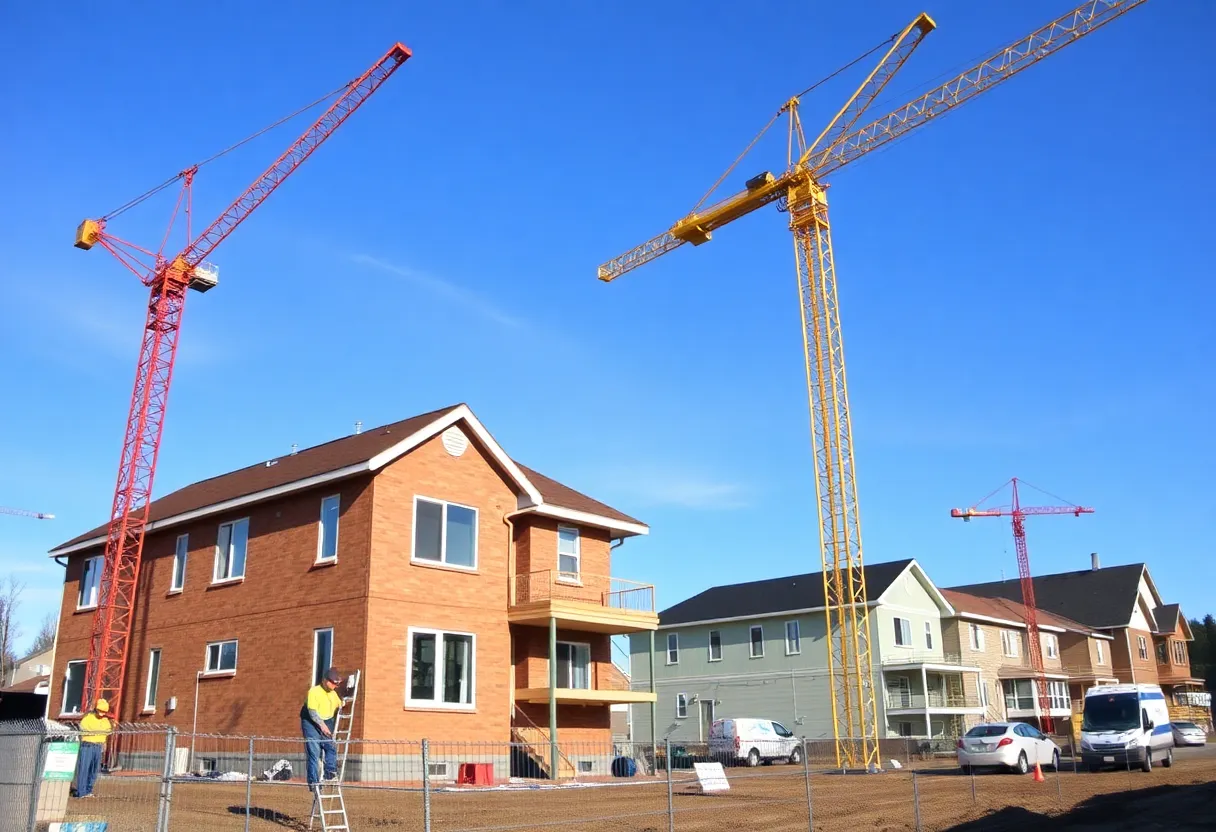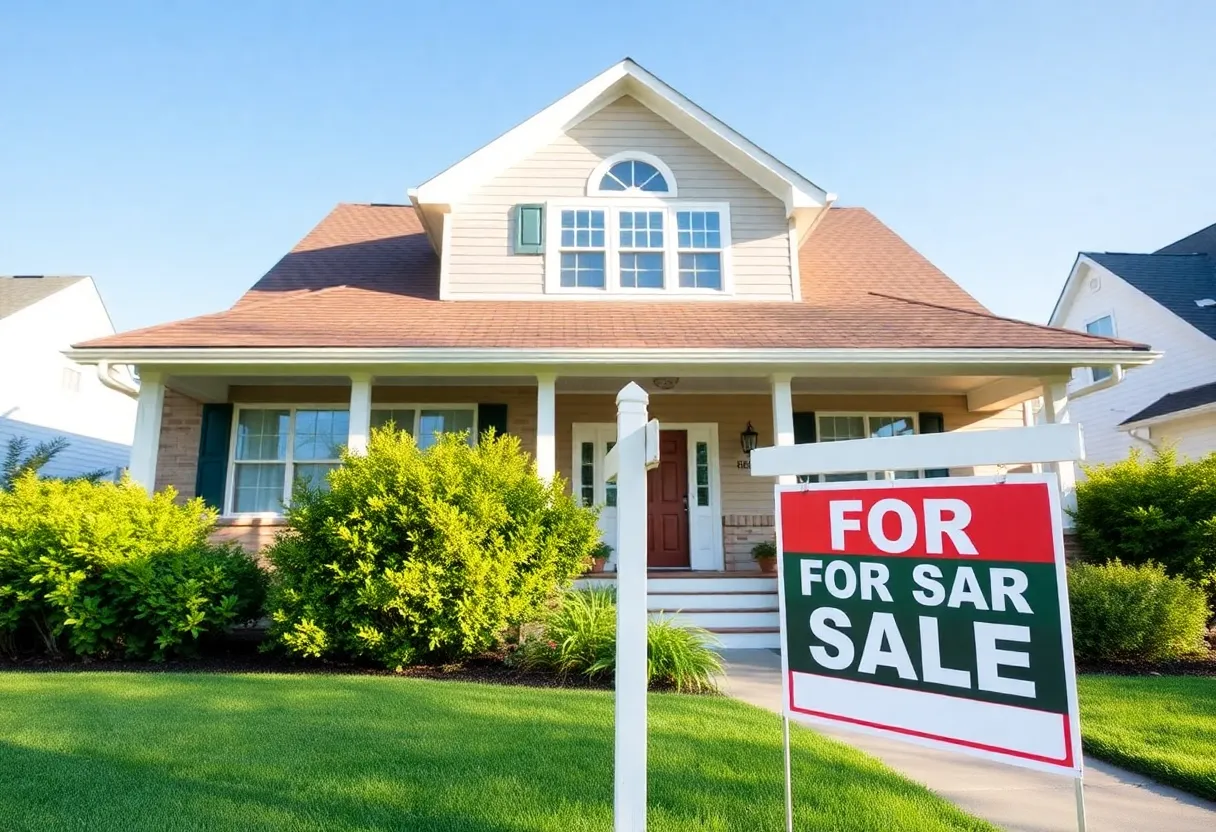News Summary
Seattle’s homebuilding market is experiencing significant cost increases driven by rising land prices, regulatory expenses, and tariffs on construction materials. A study from the Building Industry Association of Washington reveals that the average cost to build a single-family home now stands at approximately $309 per square foot, which is considerably higher than the national average. Legislative efforts are underway to address these challenges, but without substantial reforms, home prices are expected to keep rising, impacting affordability for buyers in the region.
Seattle Faces Rising Costs in Homebuilding Due to Regulations, Land Prices, and Tariffs
Seattle, WA – Construction costs for new homes in Washington state are experiencing a significant surge, outpacing national averages and posing challenges for aspiring homeowners. A recent study by the Building Industry Association of Washington (BIAW) highlights the factors contributing to the soaring prices, including land costs, regulatory expenses, and international tariffs.
Skyrocketing Building Expenses
The average cost to build a single-family detached home in Washington has reached approximately $309 per square foot. For a median-sized home measuring about 2,505 square feet, this translates to an average sales price of roughly $690,701. In contrast, the national average for building a comparable home is notably lower at around $428,215.
Similarly, townhomes in Washington are more expensive to construct, with an average of $404 per square foot and a median sales price near $592,195. These figures underscore the heightened costs faced by builders and buyers within the state.
Land Costs and Regulatory Expenses
A primary driver of high construction costs stems from raw land prices. In key counties such as King, Pierce, Snohomish, Kitsap, and Thurston, the median land lot costs a substantial $286,996. This significantly raises the overall expense for new developments.
Regulatory costs are another critical factor, accounting for approximately 23.8% of a home’s final sale price. This results in an added expense of around $164,386 per home. These costs originate from labor laws, workers’ compensation policies, land-use restrictions, and impact fees levied by various levels of government.
Strict policies related to labor and environmental protection—such as regulations on wildfire smoke mitigation and heat protections—also contribute to increased construction overhead. In addition, local governments impose impact fees on new developments to finance infrastructure projects, further inflating costs.
Regulatory Barriers and Zoning Laws
Complex zoning laws and building codes, particularly those aimed at energy efficiency, restrict available land for development and escalate project costs. These policies create a challenging environment for developers, ultimately pushing home prices higher and limiting options for prospective buyers.
Legislative and Industry Responses
Lawmakers have introduced several bills directly targeting these regulatory hurdles. One such measure, the Senate Bill 5184, seeks to reform parking requirements to reduce unnecessary burdens on housing projects. Additionally, the House Bill 1096, known as the “lot splitting” bill, aims to make land division easier, thereby increasing the availability of developable lots.
Another effort, Senate Bill 5729, is designed to speed up permit approvals for residential projects, which could help reduce delays and associated costs.
Industry leaders are also calling for reforms in apprenticeship and training programs to address ongoing labor shortages. They argue current policies favor labor unions and restrict the entry of new skilled workers, which is driving up labor costs and further inflating homebuilding expenses.
The Impact of Tariffs and Material Costs
Adding to the financial pressures are new tariffs imposed on imported construction materials. Materials such as steel, softwood lumber, and drywall, which comprise about 7% of goods used in residential construction, are particularly affected. These tariffs are expected to push costs even higher, affecting both materials and transportation expenses.
Many contractors report adjusting project timelines and ordering materials earlier to mitigate the impact of price volatility driven by tariff discussions and market fluctuations. Rising fuel costs necessary for transporting timber and other materials further contribute to increased building expenses.
Looking Ahead
The Building Industry Association of Washington warns that without major reforms, home prices are likely to continue rising due to regulatory costs and tariffs. The combination of strict policies, land scarcity, and international trade issues creates a challenging environment for homebuilders and buyers alike.
While some regulatory reforms are underway, industry experts suggest that prospective homeowners in Seattle and across Washington may need to consider purchasing existing homes or seeking regions with fewer regulatory constraints to navigate the current housing market’s hurdles.
Conclusion
The escalating costs in Washington’s homebuilding industry highlight ongoing challenges related to land prices, regulation, and international tariffs. As lawmakers pursue reforms and industry leaders seek solutions, affordability and supply remain critical issues in the state’s housing landscape.
Deeper Dive: News & Info About This Topic
HERE Resources
Hines Acquires Major Industrial Property in Titusville, Florida
Additional Resources
- DJC: Rising Construction Costs in Washington
- KIRO7: Why Washington Home Construction Costs Surged
- Seattle Times: Fed Building Overhaul Costs
- Wikipedia: Construction Cost
- Fox 13 Seattle: Trump Tariffs and WA Contractors
- Google Search: Washington Construction Costs
Author: STAFF HERE VIRGINIA BEACH WRITER
The VIRGINIA BEACH STAFF WRITER represents the seasoned team at HEREVirginiaBeach.com, your trusted source for actionable local news and information in Virginia Beach, Virginia Beach City, and beyond, delivering "news you can use" with comprehensive coverage of product reviews for personal and business needs, local business directories, politics, real estate trends, neighborhood insights, and state news impacting the region—supported by years of expert reporting and strong community input, including local press releases and business updates, while offering top reporting on high-profile events like the Virginia Beach Neptune Festival, East Coast Surfing Championship, and military homecoming celebrations, alongside key organizations such as the Virginia Aquarium, Virginia Beach Convention Center, and Oceana Naval Air Station, plus leading businesses in tourism and defense like Busch Gardens and Northrop Grumman, and as part of the broader HERE network including HEREWilliamsburg.com, providing credible, in-depth insights into Virginia's vibrant landscape. HERE Virginia Beach HERE Williamsburg





